Some railway stations in London are charming even grandiose, others are of the utmost dullness. As I approach the end of this walking challenge,a walk between them gave a review of previous walks in the city and reflected all its amazing variety.
I got off the train at Rotherhithe. Having previously walked past the Brunel Museum I took a welcome opportunity to visit it. This was the first ever tunnel through soft mud under a river like the Thames
Marc Brunel, father of Isambard Kingdom Brunel was the engineer on this project. It was unsuccessful financially as no road approaches were built which would have enabled the projected freight traffic.
His talented son nearly lost his life when he was working on the project. I learnt much about Isambard Kingdom Brunel and was pleased to see that I had seen many of his great works including the Maidenhead Bridge, when I was walking the Thames Path.
Here the river is relatively narrow, which is why Marc Brunel chose Rotherhithe for the site of his tunnel.
The warehouses lining the river may once have stored timber, hemp, iron, tar or corn.
The bridges were for the speedier transport of goods.
Jacob’s Island was the scene for the sensational death of the villain Bill Sykes in Oliver Twist. At the time of that novel’s publication it was the home of a foul ‘rookery’, a very densely populated settlement. Later the ditches were filled in and the warehouses built
I noted with sorrow that the striking statue, entitled ‘Dr Salter’s Daydream’ commemorating a man who had benefitted the community, had been stolen. I had photographed it when I had walked the Thames Path
After almost two miles I reached London Bridge, in its present state as a building site, an unprepossessing and confusing station.
It’s completely dominated by ‘The Shard’
I was surprised how near together the London stations are, as it always seems to take an age between them by bus or tube, especially when encumbered by luggage. Another mile took me to a cluster of stations in the City
In the Square Mile, with its imposing and grandiose buildings, I passed what my grandson calls ‘The ornament to the Fire of London’
When I first moved to Hertfordshire in 1980, Liverpool Street Station was being rebuilt.
The adjoining Broad Street station was ‘redeveloped’. It’s the busiest of all British stations and frequently the lines are congested. The trains run to Hertfordshire, Essex and a long way round to Cambridge. The Stanstead Express costs more than many of the tickets for the airlines which use the airport and is very snazzy. The lines to Hertford East and Enfield Town are woefully shabby.
Fenchurch Street Station is charming. I took the trains from here when I walked those parts of the Loop which are in Essex.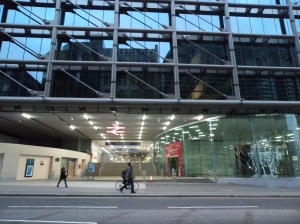
The startlingly shiny Cannon Street was closed on this Bank Holiday.
I headed now for another cluster of stations on the Euston Road and so made my way over the Holborn Viaduct.These ruins show what a near miss St Paul’s had in the Blitz.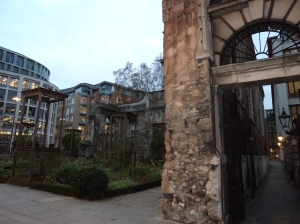
The buildings here are less showy than in the City. This is the legal district and Justice can be seen overlooking the area holding aloft her scales.
She is my Christmas toast and in her I put my hope for the New Year.
Among numerous very ancient churches that I passed is St Saviour without Newgate.
As befits the more learned character of the district, Holborn viaduct is adorned with allegorical figures. Here is Fine Art and a winged lion.
Sir William Walworth, twice Mayor of London stands guard in a niche in this ornate building. He killed Wat Tyler.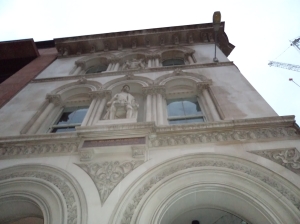
Kings Cross is where we used to take the train to visit my grandfather in Harrogate
A utilitarian building, it nevertheless serves the entire East Coast of Britain.
My grandmother told me that we had ancestors who came ‘down south’ as they were master craftsmen and worked on the building of St Pancras.
The most magnificent of stations; the name Betjeman is preserved in a waiting room as tribute to the poet laureate, who did much to save this most worthy Eurostar terminal.
Euston was not so lucky and the Euston Arch was lost
I remember the rebuilding of this too in the sixties. This is the station where I boarded a train home and I can never go there without a pang of remembrance for my parents. There’s a beautiful song by Davey Arthur, called Euston Station, a tape of which I inherited from Charlotte. It portrays the longing for home of the expatriate Irish in London ‘If you long to be somewhere then go while you can’ Kings Cross and Euston are the two stations which lead to the North, and as such are the most difficult for me to walk past without acute pangs of nostalgia.
Two entrance lodges to Euston station were saved.Inscribed on them are names of towns served by the railway, including Stockport, where I first boarded a train for London en route for my first trip to France.
 Walking along the Euston Rd and then the Marylebone Road, the architecture becomes Regency. St Marylebone Church is where Elizabeth Barrat secretly married Robert Browning.
Walking along the Euston Rd and then the Marylebone Road, the architecture becomes Regency. St Marylebone Church is where Elizabeth Barrat secretly married Robert Browning.
I had never visited Marylebone station.( For fashionistas it’s where you take a train to the designer outlet centre at Bicester.) I found it a charming homely station.
Continuing westward, I came to the much grander Paddington Station, which I was better able to appreciate, having watched a film, earlier in the day at Rotherhithe on the life of it’s great designer, Isambard Kingdom Brunel.I admired the great roof above the platforms and the craftsmanship evident on the concourse in the distinctive style of the Great Western
I now made my way to Charing Cross via Piccadilly and a festive Trafalgar Square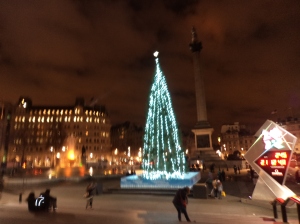
Not every station has a work of art outside it but that is what the Charing Cross Station has. It’s a replacement for the original thirteenth century cross commissioned by Edward the First in memory of his queen, Eleanor.
This marks the centre of London. I ended the walk here on December 28th, the eleventh anniversary of Charlotte’s death. It was the revised date for the completion of this walk but there are still 20.5 miles remaining to complete the second four hundred miles.

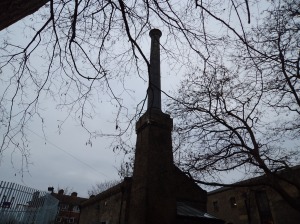
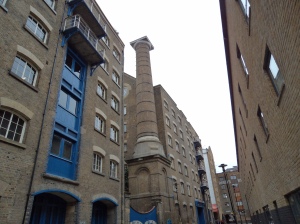

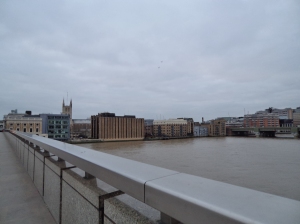

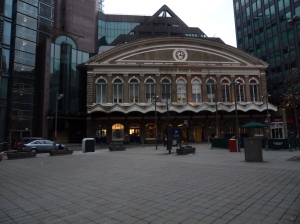
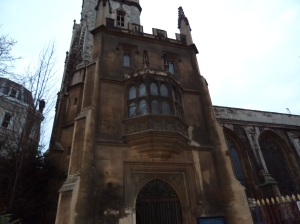


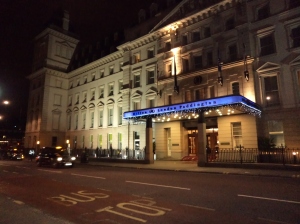




 Posted by margotwilson
Posted by margotwilson